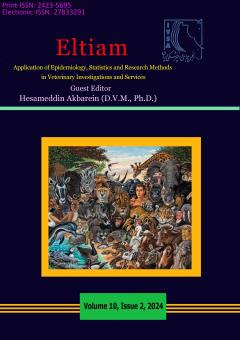ameness is a common problem in small animal medicine. Since animals, especially dogs, bear most of their weight on their front legs, it seems necessary to examine the fore limb. Diagnosis and treatment of fore limb lameness are often difficult. Diagnosis of the lesion i
More
ameness is a common problem in small animal medicine. Since animals, especially dogs, bear most of their weight on their front legs, it seems necessary to examine the fore limb. Diagnosis and treatment of fore limb lameness are often difficult. Diagnosis of the lesion is difficult because patients usually do not show obvious pain on palpation. Investigation of the cause of lameness and the anatomical location of the lesion depends on the age, breed, and lifestyle of the animal. Therefore, a systematic orthopedic examination of the extremity is critical to ensure that all structures are assessed and no part is overlooked. An orthopedic examination includes not only a clinical examination of the patient but also an anamnesis, gait observation, stride analysis, and evaluation. First, a history of lameness, diagnosis, previous treatment, and its effectiveness, presence of other systemic conditions, and diet should be evaluated. Assessing a patient's gait on flat and sloping surfaces at different speeds can help understand which limb is lame. Studying and analyzing animal movements is considered a very important step in detecting organ damage and abnormalities. Abnormal gait that may be caused by nerve or musculoskeletal damage is therefore called lameness. It is caused by hereditary, congenital, developmental disorders, trauma, and infection of this organ. Finally, an orthopedic clinical examination of the animal is performed. The appearance of pain during the examination indicates the localization of the lesion since an orthopedic examination of the organ does not cause pain in healthy animals. First, the normal, seemingly healthy side is checked so that the animal is calm and so that individual responses to specific tests can be judged. Therefore, this article describes a method for systematic orthopedic examination of the fore limb.
Manuscript profile


